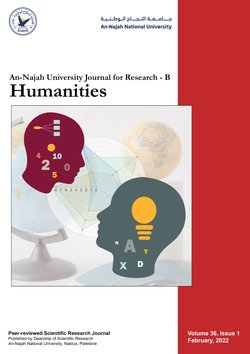Morphometric and Hydrological Characteristics of Wadi Hasa Basin Using GIS & DEM
Authors:
Article info
2016-08-12
2017-02-14
965 - 996
Keywords
- Basin Water
- Morphometric Characteristics
- Hydrological Characteristics
Abstract
The aim of study is to analyze the Morphometric characteristics and Hydrological network watery discharge of Wadi Hasa, represented characteristics cadastral, and longitudinal, formal and topographic characteristics of the water drainage network as well as to identify some hydrological variables such as the concentration and quantity of The water flow of the river and determine the direction of flow and areas of runoff gathering time. study relied on GIS Topographic maps and digital elevation model (DEM) as a tool to set up a network rivers draining map and classified according to the way Strahler to Mratbha river basin and draw some morphometric characteristics and Hydrological been identified for different basin morphometric characteristics, have reinforced This study is to understood Morphometric and hydrological characteristics of Wadi Hasa.The study has revealed the importance of Geographic information systems to deal with the data in the analysis of spatial data, link metadata and its role in Morphometric studies and Hydrological characteristics of the analysis, The Morphometric characteristics correlation phenomena Hydrological because they are tied to climate the direction of rainstorms, the extent of continuity. and its impact on water runoff and flooding. The study recommended the need of use of modern data that include space visualizations and digital elevations model (DEM) in morphometric studies for the construction of Geographic data for Morphometric variables base.
AL-Rwashdeh, S., Masarwah, T., & Taran, A. (2017). Morphometric and Hydrological Characteristics of Wadi Hasa Basin Using GIS & DEM. An-Najah University Journal for Research - B (Humanities), 31(6), 965–996. https://doi.org/10.35552/0247-031-006-004
[1]S. AL-Rwashdeh, T. Masarwah, and A. Taran, “Morphometric and Hydrological Characteristics of Wadi Hasa Basin Using GIS & DEM,” An-Najah University Journal for Research - B (Humanities), vol. 31, no. 6, pp. 965–996, Jun. 2017, doi: 10.35552/0247-031-006-004.
AL-Rwashdeh, Shatha, et al. “Morphometric and Hydrological Characteristics of Wadi Hasa Basin Using GIS & DEM.” An-Najah University Journal for Research - B (Humanities), vol. 31, no. 6, June 2017, pp. 965–96. Crossref, https://doi.org/10.35552/0247-031-006-004.
1.AL-Rwashdeh S, Masarwah T, Taran A. Morphometric and Hydrological Characteristics of Wadi Hasa Basin Using GIS & DEM. An-Najah University Journal for Research - B (Humanities) [Internet]. 2017 Jun;31(6):965–96. Available from: http://dx.doi.org/10.35552/0247-031-006-004
AL-Rwashdeh, Shatha, Taleb Masarwah, and Ayed Taran. “Morphometric and Hydrological Characteristics of Wadi Hasa Basin Using GIS & DEM.” An-Najah University Journal for Research - B (Humanities) 31, no. 6 (June 2017): 965–96. https://doi.org/10.35552/0247-031-006-004.
الخصائص المورفومترية والهيدرولوجية لحوض وادي الحسا باستخدام نظم المعلومات الجغرافية ونموذج الارتفاعات الرقمية
المؤلفون:
معلومات المقال
2016-08-12
2017-02-14
965 - 996
الكلمات الإفتتاحية
- Basin Water
- Morphometric Characteristics
- Hydrological Characteristics
الملخص
تهدف الدراسة إلى تحليل الخصائص المورفومترية والهيدرولوجية لشبكة التصريف المائي لحوض وادي الحسا، والمتمثلة بالخصائص المساحية والطولية والشكلية والتضاريسية، وخصائص شبكة الصرف المائي، فضلا ًعن التعرف على بعض المتغيرات الهيدرولوجية، مثل زمن الوصول وكمية التدفق المائي للنهر، وتحديد اتجاه الجريان، ومناطق تجمع الجريان. واعتمدت الدراسة على نظم المعلومات الجغرافية والخرائط الطبوغرافية ونموذج الارتفاعات الأرضية الرقمية (DEM) كأداة لإعداد خارطة شبكة التصريف النهري والتي صنفت بحسب طريقة Strahler إلى مراتبها النهرية للحوض، واستخلاص بعض الخصائص المورفومترية والهيدرولوجية، وتم تحديد الخصائص المورفومترية المختلفة للحوض، وقد عززت هذه الدراسة من فهم الخصائص المورفومترية والهيدرولوجية لحوض وادي الحسا. وقد كشفت الدراسة أهمية نظم المعلومات الجغرافية كوسيلة للتعامل مع البيانات في تحليل البيانات المكانية، وربطها بالبيانات الوصفية، ودورها في تحليل الخصائص المورفومترية، والدراسات الهيدرولوجية، ومدى ارتباط الخصائص المورفومترية بالظواهر الهيدرولوجية؛ لارتباطها بالمناخ واتجاه العواصف المطرية ومدى استمراريتها، وتأثيرها على الجريان المائي والفيضانات. وتوصي الدراسة بضرورة استخدام البيانات الحديثة، والتي تشمل على المرئيات الفضائية، ونموذج الارتفاعات الأرضية الرقمية (DEM) في الدراسات المورفومترية لبناء قاعدة بيانات جغرافية للمتغيرات المورفومترية.
AL-Rwashdeh, S., Masarwah, T., & Taran, A. (2017). Morphometric and Hydrological Characteristics of Wadi Hasa Basin Using GIS & DEM. An-Najah University Journal for Research - B (Humanities), 31(6), 965–996. https://doi.org/10.35552/0247-031-006-004
[1]S. AL-Rwashdeh, T. Masarwah, and A. Taran, “Morphometric and Hydrological Characteristics of Wadi Hasa Basin Using GIS & DEM,” An-Najah University Journal for Research - B (Humanities), vol. 31, no. 6, pp. 965–996, Jun. 2017, doi: 10.35552/0247-031-006-004.
AL-Rwashdeh, Shatha, et al. “Morphometric and Hydrological Characteristics of Wadi Hasa Basin Using GIS & DEM.” An-Najah University Journal for Research - B (Humanities), vol. 31, no. 6, June 2017, pp. 965–96. Crossref, https://doi.org/10.35552/0247-031-006-004.
1.AL-Rwashdeh S, Masarwah T, Taran A. Morphometric and Hydrological Characteristics of Wadi Hasa Basin Using GIS & DEM. An-Najah University Journal for Research - B (Humanities) [Internet]. 2017 Jun;31(6):965–96. Available from: http://dx.doi.org/10.35552/0247-031-006-004
AL-Rwashdeh, Shatha, Taleb Masarwah, and Ayed Taran. “Morphometric and Hydrological Characteristics of Wadi Hasa Basin Using GIS & DEM.” An-Najah University Journal for Research - B (Humanities) 31, no. 6 (June 2017): 965–96. https://doi.org/10.35552/0247-031-006-004.

Since 2019
Cite Score (Scopus): 0.5
Time to First Decision: 7 Days
Submission to Acceptance: 60 Days
Acceptance to Publication: 10 Days
Acceptance Rate: 20%
Call for Papers:
Special Issue on
Innovative Assessment in the Age of AI: Strategies for Quality
Why should you
Publish With Us?
An-Najah National University
Nablus, Palestine
Nablus, Palestine
- P.O. Box
- 7, 707
- Fax
- (970)(9)2345982
- Tel.
- (970)(9)2345560
- (970)(9)2345113/5/6/7-Ext. 2628
- [email protected]
- EIC
- Prof. Waleed Sweileh
